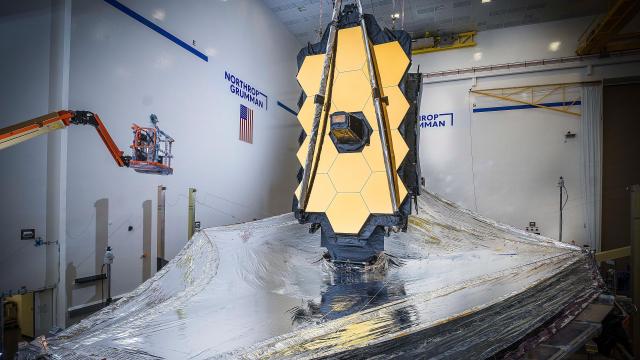After a hiatus, one of Webb Space Telescopes cameras will be fully operational again following an engineering test that took place last week.
Webb’s Mid-Infrared Instrument (MIRI) will resume observations using its medium-resolution spectrometry (MRS) mode by November 12, NASA announced Tuesday in a blog post. The instrument had suffered a minor glitch on August 24 due to increased friction in one of MRS’ grating wheels. Since then, the Webb science team had paused observations using that mode.
Following an in-depth investigation, the team concluded that the glitch was likely caused by “increased contact forces between the wheel central bearing assembly’s sub-components under certain conditions,” NASA wrote. That particular mechanism essentially functions like a “grating wheel” for the MRS observing mode, allowing scientists to select between short, medium, and longer wavelengths when making observations.
The investigation team then developed a set of recommendations on how to use the grating wheel mechanism during science observations. On November 2, NASA ran through an engineering test with new operational parameters based on predictions of the friction in the wheel. The test was successful, and MRS got the green light to carry out science observations once again.
The MRS mode is resuming at the perfect moment, as Webb gears up for a time-limited opportunity to see Saturn’s polar regions. The planet’s poles won’t be observable by Webb for another 20 years after that. But the science team is taking it slow at first, scheduling extra science observations for MRS in order to monitor how well it does under the new operational parameters before fully resuming its regular schedule, according to the Space Telescope Science Institute.
Webb’s MIRI uses a camera and a spectrograph to see light in the mid-infrared part of the spectrum, wavelengths of light that are longer than what the human eye can see. MIRI has four observing modes: imaging, coronagraphic imaging, low-resolution spectroscopy, and medium-resolution spectroscopy. The MRS observing mode is useful for observing signals from the interaction of light and matter, like the emissions coming from molecules and dust in planet-forming disks.
The imaging instruments on Webb have been delivering stunning views of the cosmos. Most recently, Webb imaged the iconic Pillars of Creation, revealing the stretched-out ‘hand’ of gas and dust in exquisite detail.
More: Space Pebble That Hit Webb Telescope Caused Significant Damage, Scientists Say
